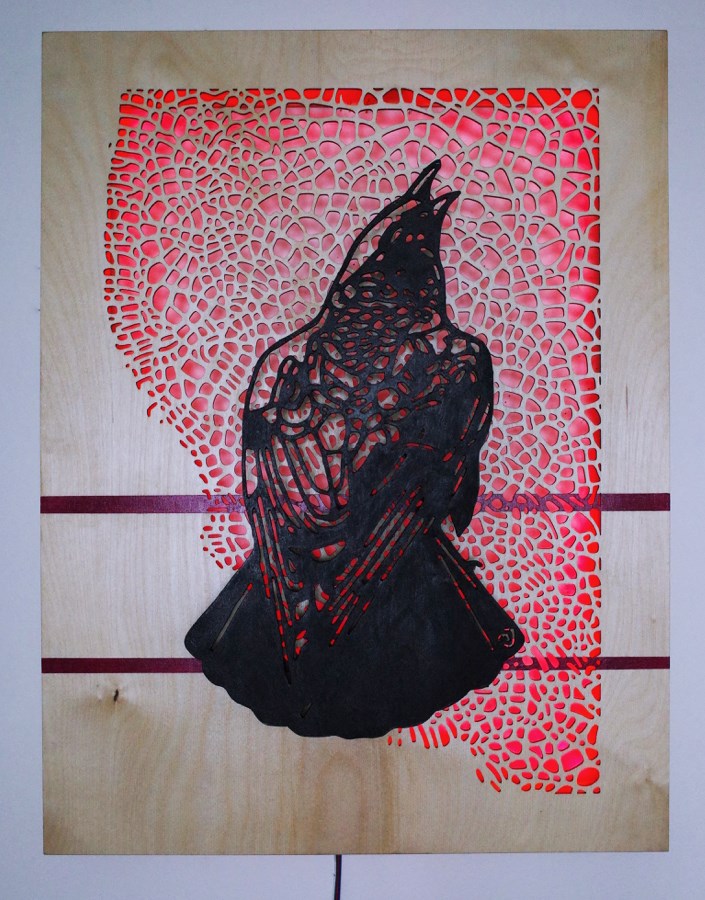For Mark Johnston, Luminescence is a highlight of his arts calendar every year.
“It’s beautiful; the work here is amazing,” Johnston says. “Even if I wasn’t in it, I would be here to see it. There’s something about light that transforms work and makes it very special.”
Johnston first exhibited in the show last year and returns this year with two pieces: Crackle Crow and The Swimmer. Both begin with photos – one a shot of a neighbourhood crow; the other an image by photographer Vince Hemingson of a person swimming underwater.
Johnston then explores and expands the pieces by using crackle paint backgrounds and paper-cut techniques to render laser-cut images in metal and wood. In Crackle Crow, the bird watches over the background of random cracks, with two red horizontal lines signifying the human desire to control nature. It’s constructed from Baltic birch, with LED lights. The Swimmer, meanwhile, is an edge-lit acrylic piece that explores the changeability of water, with LED lighting providing reflection and a change of mood as daytime light progresses into evening and then nighttime.
Each piece involves a complex building process – Johnston estimates that, for these two pieces alone, he put in some 120 hours for the painstaking work of design and tracing alone.
“It helps if you’re a little OCD,” he says with a laugh, noting he doesn’t dwell on the thought of the dozens of hours ahead of him when he sits down to cut his designs.
“I don’t think of the end; I focus on the process,” he says. “My goal has never been to mass-produce.”
Meticulous attention to detail isn’t anything new to Johnston. The Ottawa-born artist spent most of his career as a software developer before being laid off seven years ago; for the past six years, he’s devoted his life to art.
“I’ve always been a photographer, so I’ve always had this way of seeing things,” says Johnston, who’s made his home in Vancouver for the past 25 years.
He has also long been interested in the tradition of paper-cut art, common in many Asian and Eastern European cultures. Now he combines those two interests with his technology background, using digital tools such as Photoshop, Inkscape and Illustrator to create his designs and then laser-cutting them into other mediums.
In so doing, Johnston says, he reduces the original photo to its basic shape – and it fascinates him that, even with the removal of visual cues from an original photograph, viewers can still keep a feeling of emotion and connectedness to the piece.
“I want them to be drawn not just to the piece, but to the story behind it,” he said.
He’s hoping, for instance, that Crackle Crow will give viewers pause to think about the impact humans are having on climate change.
And he’s hoping viewers will appreciate the ways in which the use of light in his pieces, and the play of light and shadow, become part of the art.
“It actually adds another element to the piece,” he says. “It almost makes the piece alive.”



